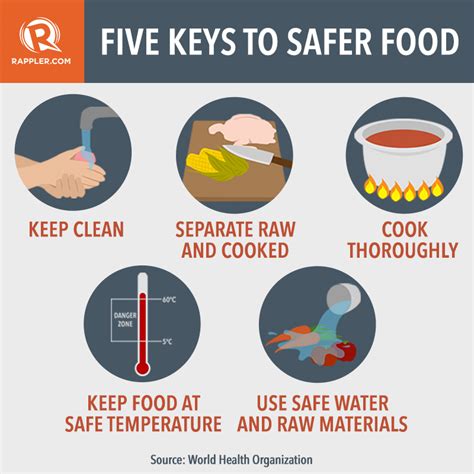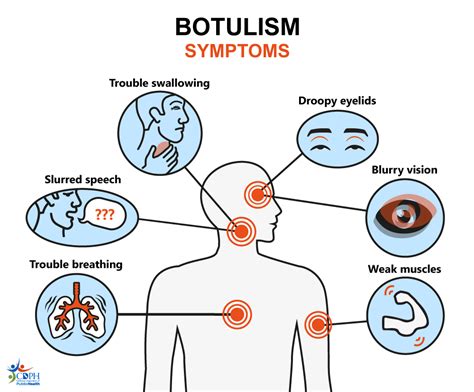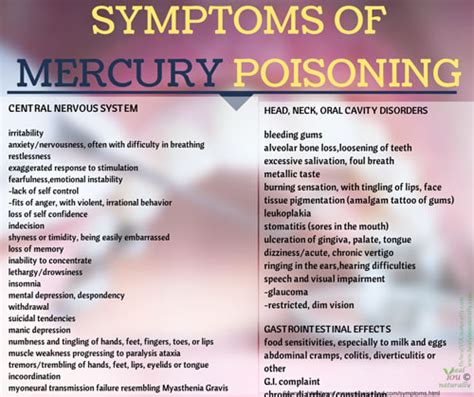
Identifying and Preventing Food Poisoning from Contaminated Produce
Understanding the risks of contaminated produce
When it comes to our daily eating habits, fruits and vegetables play a crucial role in providing us with essential nutrients and keeping us healthy. However, have you ever stopped to consider the risks associated with consuming contaminated produce? Contamination can occur at various stages, starting from production to processing and even storage. In this blog post, we will delve into the topic of understanding the risks of contaminated produce, shed light on common sources of contamination, and discuss the best practices for selecting and storing produce to keep you and your loved ones safe.
Contamination can occur from a range of sources, both natural and man-made. One of the common sources of produce contamination is pathogenic bacteria such as Salmonella, E. coli, and Listeria. These bacteria can contaminate fresh produce through contact with contaminated soil, water, or animals during the growing or harvesting process. Contamination can also occur during transportation or storage if proper hygiene practices are not followed. Additionally, poor personal hygiene of food handlers and improper handling of produce in retail stores can contribute to contamination. It is important to be aware of these sources and take necessary precautions to minimize the risks.
When it comes to selecting produce, there are a few best practices that can help reduce the chances of consuming contaminated products. Firstly, it is essential to choose fruits and vegetables that are free from bruises, cuts, or other visible signs of damage. These damaged areas can provide an entry point for bacteria and other pathogens. Secondly, opt for organic produce whenever possible, as they are less likely to have been treated with chemical pesticides or fertilizers that may pose health risks. Lastly, make sure to wash your hands thoroughly before handling produce and use clean cutting boards and utensils to prevent cross-contamination.
| Steps to Prevent Contamination |
|---|
| 1. Wash thoroughly: Before consuming or preparing produce, make sure to wash it thoroughly under running water to remove any dirt, bacteria, or pesticides that may be present. |
| 2. Store correctly: Proper storage of produce is vital to maintain its freshness and reduce the risk of contamination. Some fruits and vegetables require refrigeration, while others are better stored at room temperature. Research the storage guidelines for each produce item and follow them diligently. |
| 3. Separate from raw meat: To avoid cross-contamination, store produce separate from raw meat, poultry, and seafood in your refrigerator. Use separate cutting boards and utensils for meat and produce to prevent the transfer of harmful bacteria. |
| 4. Cook to the right temperature: Certain produce, such as sprouts and leafy greens, may be consumed raw. However, other produce items may require cooking to kill any potential pathogens. Ensure that these items are cooked to the recommended temperatures before consumption. |
By understanding the risks associated with contaminated produce and implementing best practices for selection, storage, and preparation, you can significantly reduce the chances of falling victim to foodborne illnesses. Remember, your health and the well-being of your family should always be a top priority, and taking the necessary precautions when it comes to produce is a vital step towards that goal.
Common sources of produce contamination
When it comes to ensuring the safety of our produce, it is essential to be aware of the common sources of contamination. By understanding where the risks lie, we can take necessary precautions to protect ourselves and our loved ones from potential foodborne illnesses. Let’s take a closer look at some of the most common sources of produce contamination and how we can minimize these risks.
1. Contaminated water: Water used during irrigation or washing of produce can be a significant source of contamination. If the water is contaminated with harmful bacteria, such as E. coli or Salmonella, it can easily transfer onto the surface of fruits and vegetables. It is crucial to use clean and potable water for all agricultural practices and ensure proper sanitation measures are followed during the washing process.
2. Improper handling: Improper handling of produce can contribute to contamination. This can happen at various stages, from harvesting to transportation and storage. If produce comes into contact with unclean surfaces, equipment, or hands, it risks becoming contaminated. It is important for everyone involved in the supply chain, including farmers, workers, and retailers, to follow strict hygiene practices to prevent cross-contamination.
3. Animal waste: Animals, such as livestock or wild animals, can carry harmful bacteria, such as E. coli or Salmonella, in their feces. This can contaminate the soil, water sources, or crops grown in close proximity. Proper measures should be taken to minimize the contact between animals and produce, such as maintaining appropriate fencing or implementing adequate pest control measures.
4. Unsanitary storage conditions: Inadequate storage conditions can also lead to produce contamination. If fruits and vegetables are stored at improper temperatures or in unsanitary environments, it provides a favorable breeding ground for bacteria. It is important to store produce in clean and well-ventilated areas, following recommended temperature guidelines.
| Common Sources of Produce Contamination | Risk Level |
|---|---|
| Contaminated water | High |
| Improper handling | Moderate |
| Animal waste | High |
| Unsanitary storage conditions | Moderate to High |
By understanding the common sources of produce contamination, we can be more vigilant in our efforts to select and handle produce safely. Following best practices, such as washing fruits and vegetables thoroughly, avoiding cross-contamination, and storing produce properly, can go a long way in reducing the risks of foodborne illnesses. Remember, it is essential to prioritize food safety to ensure the well-being of ourselves and our families.
Best practices for selecting and storing produce
When it comes to selecting and storing produce, following best practices is crucial to ensuring its safety and quality. By choosing the right fruits and vegetables and properly storing them, you can minimize the risk of contamination and maximize their freshness. In this blog post, we will discuss some essential tips and techniques to help you make informed decisions when selecting and storing produce.
First and foremost, it is important to inspect the produce before purchasing. Look for any signs of damage, such as bruises or cuts, as these can indicate a higher risk of contamination. Avoid produce that appears wilted, moldy, or discolored, as these are signs of spoilage. Additionally, check for any expiration dates or recalls on packaged produce.
Next, consider the importance of buying locally and seasonally. Locally sourced produce is often fresher and has a reduced chance of contamination, as it spends less time in transit. Seasonal produce is more likely to be of higher quality, taste better, and be more affordable. Farmers’ markets are excellent places to find locally and seasonally grown produce.
Proper storage is key to maintaining the freshness and safety of your produce. Different fruits and vegetables have varying storage requirements, so it’s essential to know which ones to keep at room temperature, which should be refrigerated, and which need to be stored separately. For example, potatoes, tomatoes, and onions should be stored in a cool, dark place, away from direct sunlight, while leafy greens and berries should be refrigerated to preserve their crispness and inhibit bacterial growth.
- Keep fruits and vegetables separate: Certain fruits, such as apples and bananas, release ethylene gas, which can cause other produce to spoil more quickly. By storing them separately, you can prevent premature spoiling.
- Use appropriate containers: Opt for breathable containers or bags to store produce in the refrigerator. This allows for proper air circulation and helps maintain optimal humidity levels.
- Handle produce with care: Avoid squeezing or roughly handling fruits and vegetables, as it can lead to bruising and damage, increasing the risk of contamination. Always wash your hands before handling produce to minimize the transfer of bacteria.
Lastly, consume your produce within a reasonable timeframe to enjoy them at their best. While proper storage can extend the shelf life, it is always best to consume fruits and vegetables within their recommended timeframes to ensure their freshness and nutrient content.
In conclusion, selecting and storing produce properly is essential for both the safety and quality of your fruits and vegetables. By following these best practices, you can minimize the risk of contamination, prolong their freshness, and make the most of their nutritional value. Remember to inspect the produce before purchasing, buy locally and seasonally, store them appropriately, and consume them within a reasonable timeframe. By incorporating these practices into your routine, you can ensure that your produce is always at its best.
Proper techniques for washing and preparing produce
Proper techniques for washing and preparing produce are essential to maintain good hygiene and prevent the risk of foodborne illnesses. Contaminated produce can harbor harmful bacteria, pesticides, and other contaminants that can pose serious health risks if not handled properly. By following the right steps in washing and preparing fruits and vegetables, you can minimize the chances of consuming harmful substances and ensure the safety of your meals.
Firstly, it is crucial to wash your hands thoroughly with soap and warm water before handling any produce. This helps eliminate any bacteria or germs that may be present on your hands and could potentially contaminate the fruits and vegetables. Additionally, ensure that your cutting boards, utensils, and kitchen surfaces are clean and sanitized to avoid cross-contamination.
Next, rinse your produce under cold running water before consuming or preparing it. This should be done even if you plan to peel or remove the skin from the produce. Rinsing helps remove any lingering dirt, bacteria, or pesticide residue present on the surface. For leafy greens or other produce with complex structures, consider gently rubbing the surface with your hands or using a soft-bristled brush to ensure thorough cleaning.
It is important to note that using soaps, detergents, or bleach on produce is not recommended. These substances can leave behind residues that are harmful if ingested. Stick to using clean water for rinsing unless you specifically have a food-grade produce wash product that is recommended and safe to use.
When preparing your produce, it is advisable to separate different types of produce to prevent cross-contamination. For instance, cutting raw meat on the same cutting board used for slicing fruits and vegetables can introduce harmful bacteria to your produce. Use separate cutting boards and utensils for meat, poultry, and produce to minimize the risk of contamination.
Lastly, it is essential to store your produce properly after washing and preparing. Refrigeration helps maintain freshness and slows down the growth of bacteria. Store fruits and vegetables in separate containers or sealed plastic bags to minimize moisture and prevent the spread of bacteria. Proper storage can prolong the shelf life of your produce and ensure its safety for consumption.
In conclusion, following proper techniques for washing and preparing produce is crucial for maintaining food safety. By washing your hands, rinsing produce thoroughly, avoiding the use of harsh chemicals, practicing separation during preparation, and storing produce correctly, you can minimize the risks of consuming contaminated produce and enjoy a healthy, safe meal.
Steps to prevent food poisoning from contaminated produce
Food poisoning is a common yet preventable health concern that affects millions of people around the world each year. One of the main causes of food poisoning is the consumption of contaminated produce. Contaminated produce refers to fruits and vegetables that have come into contact with harmful bacteria, viruses, or parasites at some point during their production, handling, or storage. To protect yourself and your family from potential foodborne illnesses, it is important to take appropriate steps to prevent food poisoning from contaminated produce.
1. Wash your hands: Before handling any produce, it is crucial to wash your hands with soap and water for at least 20 seconds. This helps remove any dirt, bacteria, or other contaminants that may be present on your hands. It is especially important to wash your hands after using the restroom, handling raw meat or poultry, or touching any surfaces that may be contaminated.
2. Wash your produce: Cleaning your fruits and vegetables thoroughly before consumption is essential to remove any potential contaminants. Start by rinsing them under cold running water to remove visible dirt and debris. Use a clean vegetable brush to scrub the surfaces of firm produce, such as potatoes or cucumbers. However, avoid using soap, detergents, or bleach as they can leave behind harmful residues.
3. Separate and store properly: To prevent cross-contamination, it is important to separate raw produce from other food items, such as raw meat, poultry, or seafood. Store your produce at the proper temperature to slow down the growth of bacteria. Generally, refrigeration helps to preserve the freshness and safety of most fruits and vegetables.
4. Cook thoroughly: Certain produce, such as sprouts and leafy greens, may be more prone to contamination and should be cooked thoroughly before consumption. Cooking at appropriate temperatures can help kill harmful bacteria and reduce the risk of food poisoning. Use a food thermometer to ensure that the internal temperature reaches the recommended level for each type of produce.
By following these simple steps, you can significantly reduce the risk of food poisoning from contaminated produce. Remember, practicing proper food safety measures is essential for maintaining your health and well-being. Stay informed, stay cautious, and enjoy your fresh fruits and vegetables with peace of mind!
Frequently Asked Questions
Question 1: What are the risks of contaminated produce?
Contaminated produce can pose various health risks, including foodborne illnesses caused by pathogens such as Salmonella, E. coli, and Listeria. Consuming contaminated produce can lead to symptoms like nausea, vomiting, diarrhea, and in severe cases, hospitalization or even death.
Question 2: What are common sources of produce contamination?
Produce contamination can occur from various sources, including improper handling during harvesting, processing, or transportation. It can also result from contaminated water used for irrigation or washing, contact with animals or their feces, and poor hygiene practices of food handlers.
Question 3: What are some best practices for selecting and storing produce?
To select and store produce safely, follow these practices: choose fresh-looking produce, avoid bruised or damaged items, keep produce refrigerated to maintain freshness and slow bacterial growth, and separate produce from raw meats to prevent cross-contamination.
Question 4: What are the proper techniques for washing and preparing produce?
To wash and prepare produce properly, follow these steps: rinse produce thoroughly under running water, using a vegetable brush for harder items, remove outer leaves of lettuce or cabbage, and peel or cut away damaged or bruised areas. It’s unnecessary to use soap or produce washes.
Question 5: How can I prevent food poisoning from contaminated produce?
To prevent food poisoning from contaminated produce, you should wash all fruits and vegetables before consuming them, cook produce that is meant to be cooked thoroughly, avoid cross-contamination by using separate cutting boards for raw meats and produce, and practice good hygiene, such as washing hands before handling produce.
Question 6: How long can I keep produce before it becomes unsafe to eat?
The shelf life of produce varies depending on the type and freshness at the time of purchase. Generally, most fruits and vegetables can be stored safely for a few days up to a week in the refrigerator. However, it is important to check for signs of spoilage, such as mold, sliminess, or off odors, and discard any produce that looks or smells suspicious.
Question 7: Are organic fruits and vegetables less likely to be contaminated?
While organic produce is grown without synthetic pesticides and fertilizers, it is not immune to contamination. Organic farms still face the risk of contamination from environmental factors or handling practices. Washing all produce, whether organic or conventional, is essential for removing potential pathogens and reducing the risk of foodborne illness.


